If you’re going to try and photograph the northern lights, what is the best focal length to use?
This question came up recently when I was planning out my next few months of shooting. Having lived in and travelled around Canada for many years, I have been lucky enough to photograph the northern lights (Aurora Borealis) on many occasions. In the past I hadn’t been specifically looking for them, they just happened to show up where I was, but the coming fall and winter seasons were going to be different for me due to a huge change in my life: I now live in the Yukon.
Some quick background
The Canadian Yukon Territory is one of the best places in the world to see the northern lights, and I plan to take my aurora hunting a lot more seriously now I live here. At this higher latitude they show up much more frequently, more strongly, and with less light pollution due to the lack of populated areas up here. Apart from the frigid temperatures – regularly -30 Celsius (-22F) and below in the winter – it’s pretty much the perfect spot to be in.
Over the years I have used a variety of different lenses to capture my existing collection of aurora photos, but none were purchased specifically for the job. If I’m going to focus a lot of time and energy into creating a new set of aurora photos in the Yukon, I want to arm myself with the best lens(es) for the job. Nobody wants to stand outside all night in those temperatures wishing they had a different lens with them!
When I started to look back through my existing aurora photos and recall those previous experiences, it quickly reminded me that there are going to be two major factors in choosing a focal length to photograph the northern lights: Focal length, and the maximum aperture of lenses available on the market with that chosen focal length.
Aperture considerations
Whilst it is possible to photograph the aurora with a lens that has a maximum aperture of f/2.8 or f/4, it forces you to use a very high ISO that can leave your images looking too grainy. You might think you can mitigate this by simply using a longer shutter speed, but what many people don’t consider if they haven’t seen the aurora before, is that it’s often moving quite rapidly, or “dancing” as many people call it. Sure you could shoot a 30-second exposure with a smaller aperture (such as 2.8 or 4), but what you’ll be left with is a large block of colour in the sky, and many of the dancing beams of sharp light will be lost. I’ve had to do it myself in the past and it’s better than nothing, but it’s not ideal.
So for me, the best lens for shooting the aurora is something with a wider maximum aperture such as f/1.4, f/1.8 or f/2. Lenses with an f/2.8 aperture are occasionally usable with very bright and intense northern light displays, as long as you’re using a camera where you are willing to shoot at something in the range of ISO 5000 or ISO6400. This almost certainly means a camera with a full-frame sensor if you’re to stand any hope of getting a reasonably clean looking image.
I know for example that the Nikon and Sigma 14-24mm f/2.8 lenses are popular. These can be usable under the right conditions, but you’re going to get better images with a wider aperture, due to the faster shutter speed that will enable you to freeze the dancing motion of the aurora during a vibrant display.
Whilst we are here to talk specifically about focal length today, knowing that you’d be best with a lens featuring one of those wider apertures narrows the market-available lenses down quite considerably.
Focal length choices
A good northern lights display can span a large portion of the sky, so when looking for the perfect focal length there is no doubt we are looking for a wide-angle lens.
It’s much easier to find a prime lens with a nice wide aperture than it is to find a zoom. When you start to look around the marketplace for wide-angle prime lenses, you quickly realise that they mostly fall into 3 focal lengths: 35mm, 24mm and 14mm.
From my experience shooting northern lights in the past, I’m going to right away that 35mm is not wide enough to be the ideal focal length for this. If you happen to have a 35mm f/1.4 lens in your kit already then you can certainly use it to get some nice images, but I guarantee you that if you find yourself photographing a really good northern lights display you’ll wish you had something wider. I would not recommend setting out on a specific aurora photo trip to somewhere like Canada or Norway with just a 35mm f/1.4.
With 35mm cast aside as the perfect choice, this leaves us with 24mm and 14mm. I have used both of these focal lengths to photography the northern lights in the past, and the answer to which is the perfect option is actually going to be based on your own geographical location.
When a very strong geomagnetic storm occurs, this causes the aurora to be visible at much lower latitudes. If you’re in North America as most of my readership is, you might catch a glimpse of it as far South as the Northern US border and cities such as Seattle or Vancouver in British Columbia.
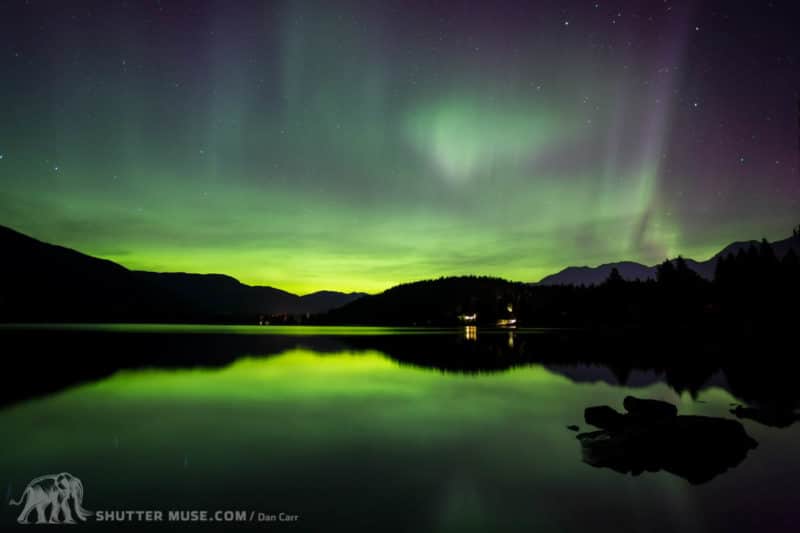
The key thing here that can only really be known once you’ve seen this phenomenon a few times, is that when viewing the northern lights from these lower latitudes, they will only be visible by looking in a northerly direction. In most cases, the aurora will reveal itself as an arcing band of colour above the northern horizon. In other words at lower latitudes, even with a really strong storm, it’s much less likely that you’ll see the lights snake their way across the sky directly above you. At these lower latitudes you’ll almost always be pointing your camera towards the northern horizon and not tilting the camera upwards at a steep angle to capture something overhead. This makes the 24mm focal length (likely a 24mm f/1.4 lens) the perfect choice for northern lights photography at lower latitudes. Those trying to photography the southern lights, Aurora Australis, should use their common sense and flip things upside down with slightly higher latitudes being better suited to the 24mm focal length.
Popular options would include the stunning Sony G-Master 24mm f/1.4, the Sigma ART 24mm f/1.4 which is available in most mount options, and the well-priced Rokinon 24mm f/1.4 for Canon, Nikon, Pentax and m4/3.

In this scenario I find the added “zoom” of the 24mm lens over the 14mm lens to be much appreciated. It’s still a wide enough lens to take in a large swathe of the night sky and capture an arc of colour across the sky, but you don’t run the risk of minimizing the colourful area in the frame, which is easy to do with 14mm when the lights aren’t dancing right above your head.
For photographers looking to capture the aurora at more northerly latitudes such as the northern parts of Norway, Sweden and Finland, or Iceland and Northern Canada, a 14mm focal length is going to be preferable.
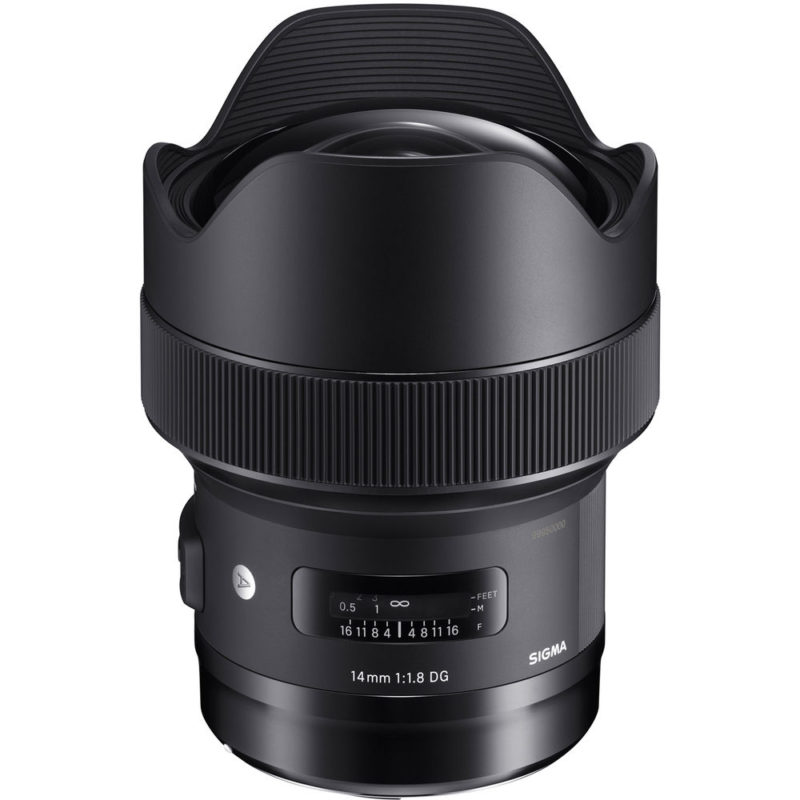
In these areas within or at least very close to the Arctic Circle, it’s much more common for the lights to be visible right overhead. In some instances, the whole sky can light up and you can point your camera in any direction to capture the display. It’s truly a very different experience to photographing them from a lower latitude where you are looking north towards the lights, versus feeling entirely enveloped by them in the far North.
If I just had one lens for aurora photography in or around the Arctic, it would have to be a fast 14mm prime like the Sigma 14mm f/1.8, which is conveniently available for Canon, Nikon, Sony and all L-mount mirrorless cameras such as Leica, Sigma and Panasonic. A lens like this would certainly be in my bag if I was planning that once-in-a-lifetime trip to try and capture the aurora.

Whilst I do think 14mm is the perfect focal length for Far North aurora photos, by all means, take a 24mm with you as well if you happen to have one. This certainly gives you some versatility when framing foreground objects in front of the lights. It also gives you some added options when the activity of the lights are warming up or dying down. The display tends to come in waves throughout the night, and a wider perspective will probably be great when the lights are at their peak, but a 24mm can extend your shooting time and give you some more options to play with either side of that peak.
Aperture vs. focal length?
If I had to make a choice between a wider focal length and a wider aperture (eg. 14mm f/2.8 vs. 24mm f/1.4) for aurora photography, without a moment’s hesitation I would choose the wider f/1.4 aperture. Even if I was planning on being in very high latitudes, the faster shutter speed that this enables you to use will capture the amazing bright beams of different dancing colours. With a smaller aperture lens, these can all get blended together with that necessary longer exposure time, or the fine gradations in tone and colour can get lost if you choose instead to bump up your ISO and subsequently apply more detail-destroying noise reduction.
The best all-round lens?
What if you’re looking to purchase one wide aperture prime for general photography, including perhaps the possibility of some occasional northern lights, but not necessarily specifically for that purpose?
If that is the case, I think a 24mm prime is a much better purchase than a 14mm prime. I would much rather be at higher latitudes photographing the northern lights with a 24mm lens, than being at a lower latitude and photographing with a 14mm lens.
In general, I find the fast 24mm prime to be one of the best prime purchases anyone can make. It can be put to great use for aurora photography, general astrophotography (including Milky Way photography), landscapes and travel. They also accept screw-on filters, unlike many 14mm lenses which tend to have bulbous front glass elements. Again, this makes it a highly versatile choice and a good purchase for someone that can’t afford to have a lens for one specific purpose.
When thinking about this sort of broader use for your lens, with the northern lights being just a small portion of its usage, you might also consider the unbelievably sharp Sigma 28mm f/1.4 ART if your tastes fall a little closer towards general travel/street photography than landscapes. The 28mm ART is probably the sharpest wide prime on the market, and whilst the focal length is very slightly beyond the preferred-for-aurora 24mm, this gives it a little more versatility as a general-purpose travel photography lens.
By the way, if I was so lucky to be able to have a pair of perfect lenses for aurora photography, I’d pair this 28mm ART with the 14mm ART. While a 24mm does a good job in most situations as a one lens option, I’d like some more distance between my primes if I had a 2-lens aurora kit. The same would go for any 14mm and 28mm combo of lenses, I’m just mentioning the Sigma ones here because if the price is no option, they are the best on the market at the moment for full-frame cameras.
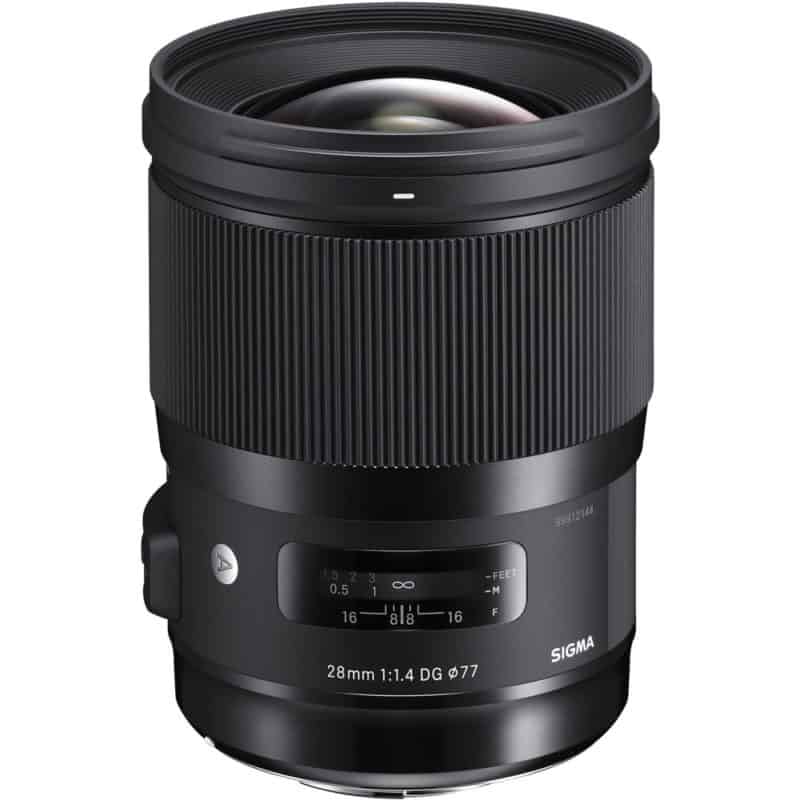
Crop sensor choice
Note that I have talked about focal lengths on full-frame cameras in this post. If you’re shooting with a crop sensor then you’ll have to multiply your focal length by 1.5 (1.6 for Canon) to get your equivalent field of view in full-frame terms. For example, a 24mm lens on a crop sensor gives you a full-frame field of view equivalent to 36mm. In other words, not wide enough to be the ideal aurora photography lens in any situation. Crop sensor shooters will more than likely be limited to 14mm lenses (or very similar) as this delivers a 21mm FOV equivalent. Fuji X Series shoots should definitely take a look at the Fujifilm XF 16mm f/1.4 R WR.
With a smaller sensor, you won’t be able to get high ISO images that are as clean as a full-frame camera, so it’s even more important to look for a lens that has a really wide maximum aperture.





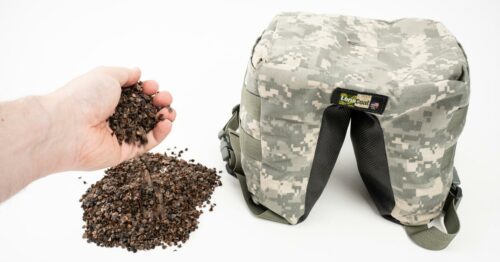
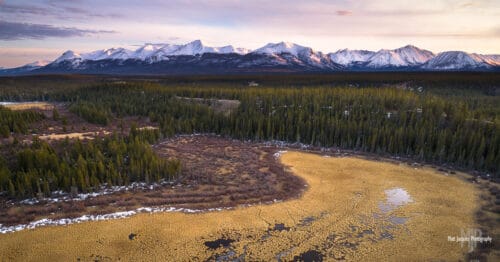
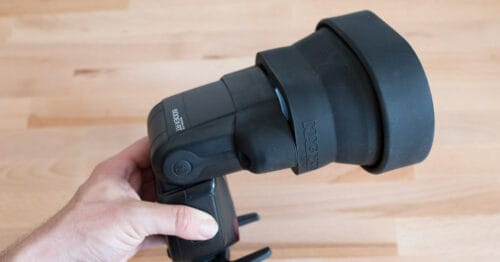
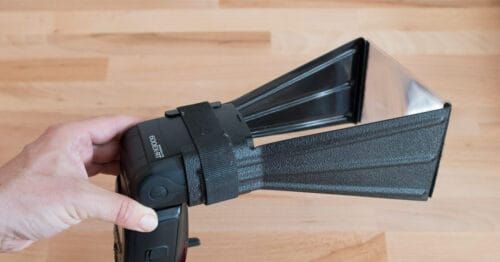
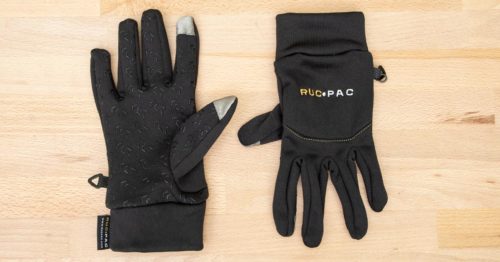
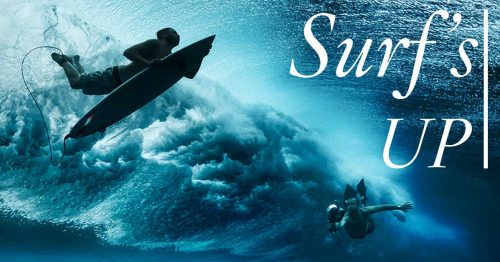
Interesting post, simply explained. Now I know why I had trouble in Invercargill trying to shoot auroras. Thanks
You’re very welcome Kat. I have to get myself back to New Zealand soon! I miss that place.
Great article – thanks Dan. I can cover much of this – just need to get further north (got stuck in Iceland overnight a few years ago, but low cloud cover).
Thanks for the kind words Nigel. Best of luck on your future aurora chases!
I have just purchased a Tokina Firin MF 20mm f2 for a trip to Iceland. This was in preference to the Samyang MF14mm f2.8. As I want it for general purposes as well – sounds as if I have made the right choice.
That is an excellent choice, yes. Have a great trip!
Hi Dan,
Just found your blog this morning trying to find explanations on many of the acronyms used in photography as I am new to this hobby of mine. I was wondering if you have an article on how and when to use all the f stops. ISOs are also troubling, but one thing at a time. I have a bridge camera, a Canon SX50HS Powershot, which I love, and have plans to get my first DSLR hopefully next year.
Thanks for the great tips you share.
HI Gail. These would be a good place to start:
https://shuttermuse.com/what-is-aperture-in-photography/
https://shuttermuse.com/what-is-iso-in-photography/
Can I ask for some advice please. I’m very new to photography and have a Canon EOS M100 and am going to Norway next year to try and take photos of the northern lights. As I have a limited budget is the following lens capable of taking a good northern lights photo please.
https://store.canon.co.uk/canon-ef-m-22mm-f-2-stm-lens/5985B005/?gclid=EAIaIQobChMItIbw-6DV7QIVicLtCh24hAbQEAAYAiAAEgLFg_D_BwE&gclsrc=aw.ds
Regards
Ian
Hi Ian. Yes, that lens is capable, and in fact, I would say that it is the best native EF-M lens for the job. The only issue is that it’s not really what I would consider to be wide enough for the ideal Northern Lights lens. With the APS-c crop of the M100, that lens has a field of view equivalent to 35mm. If you have read this article you will know that I don’t consider that to be ideal. If you are willing to look outside of native Canon lenses and focus manually the Rokinon 12mm f/2 would be an ever better choice: https://www.bhphotovideo.com/c/product/1039952-REG/rokinon_rk12m_m_12mm_f_2_0_ncs_cs.html/BI/7152/KBID/7700/DFF/d10-v21-t1-x524323/SID/DFF
Just make sure you have a tripod, too!
Dan, many thanks for your help it’s greatly appreciated.
Regards
Ian
You’re very welcome. Enjoy your trip!
I have a Nikon d5600 and a tokina
ATX-i 11-16mm f2.8 what advice do you have on taking pictures of the lights
Dan, many thanks for the advice.
I’m very new to photography can you advise whether the Canon EF-M 22mm f/2 STM Lens will be OK to shoot the northern lights please.
Regards
Ian
Hi Dan,
I just bought a used Sony A7S for my northern lights trips (usually once or twice per year since I live in Finland).. and having a huge debate with the lenses 😅 at least now I’m familiar with 14mm vs. 24 mm but still struggle to make a decision. The main purpose is northern lights but I want to have at least a tiny zoom so sounds like 24mm but I also want the widest angle if I get lucky enough again 🤣 (it has happened and it blew my mind away) Any other considerations assuming a7s is meant to be great with low light and higher ISO? Thanks,
Yes, this is a tough decision. One I could not make, which is why I carry a 14mm and a 24mm. Actually, if you really cannot make a choice then I would consider the Sony 20mm G f/1.8. This is a nice “in the middle” lens that I also use a lot. It is just as sharp as the 24mm. You do not get f/1.4, so you will end up going 1/3 stop higher on ISO, but your a7S has good ISO properties.
Hi Dan,
Interesting post – I’d say from my lower latitudes (mid UK) I’ve had good success with both 14mm and 24mm f2.8’s though have been frustrated by the noise at times. As you noted to get nice shots with the movement I have to whack the iso uk to 3200 or even 6400 on my old canon 6d. Now I’ve upgraded to an R6II and the difference is incredible – far less noise.
I have a question which I’m hoping you can answer since you live in a much colder climate and I’m due to visit Lapland and hope there’ll be the opportunity for aurora, or other Astro photos.
Do you try to insulate your camera at all? I was thinking of DIYing a neoprene cover with a pocket for a hand warmer or two to keep the camera/its battery warmer/alive for longer. Is this futile/could it help/do you do anything? Apologies if you’ve covered something similar elsewhere, I found your post as I was looking up if there’s anything interesting to be gained from using a longer focal length with Aurora at all.
Thanks,
Paul
The only times I have had camera failure due to cold is when it drops below -30. I can’t speak for your specific cameras, though. That was with Sony cameras. If it gets that cold, or if there is a cold wind blowing, I don’t think it needs anything fancy. You could wrap a sweater around the camera, and it would help to prevent the wind from sapping some of that warmth away too quickly. I don’t have anything specific for this purpose.
Hi Dan, thank very much for the article. I have a Pentax K1 with Pentax lens 24-70. I plan to go to Iceland to see the Nordic lights. Should I take other lens’?
Cheers,
Enrico
If it’s in your budget to do so, I recommend a lens with an f/1.8 or f/1.4 aperture. If this is a once-in-a-lifetime trip, it will help you keep a lower ISO and get cleaner images if/when the magic happens. Even if you budget is limited, consider buying second hand and selling again after the trip for the price you paid 🙂